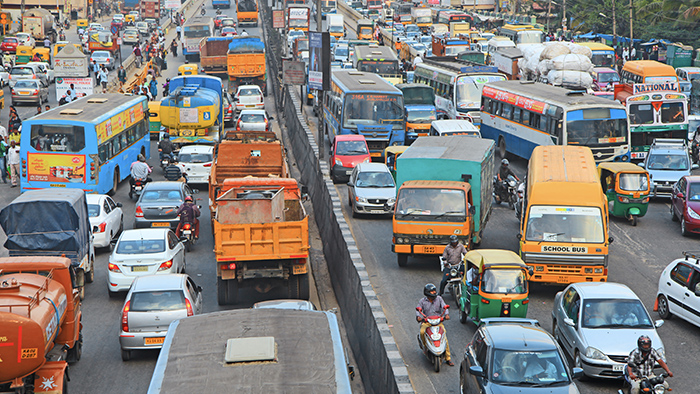Improving urban air quality by facilitating piloting of clean air zones

The development of a detailed CAZ (clean air zone) plan would focus on measures related to traffic and transportation (such as pedestrianization, cycle tracks, and EV mobility), urban planning (land use plans, heritage conservation), emission control, air quality monitoring and dust control. Through this plan, the program seeks to prioritize solutions based on emission reduction to enhance air quality in the study area. This approach aligns with sectoral sustainability goals by addressing environmental, social, and economic aspects of urban air quality improvement.
The project aims to facilitate piloting of CAZs as a policy solution to improve air quality. The objective of the program is to improve air quality in the cities of Visakhapatnam and Vijayawada, with a specific focus on transport sector interventions. This would be achieved by facilitating the piloting of CAZs in these cities through the development of an implementation plan in consultation with appropriate authorities.
One of the outcomes of the study is to facilitate the piloting of CAZs. The identification of CAZs involve analysing and marking specific areas to reduce pollution levels. This includes identifying traffic pollution hotspots through air quality evaluation, wind patterns, and land use analysis. Hotspots are ranked based on-air quality and socio-economic parameters to determine CAZ boundaries in collaboration with local authorities and experts. Subsequently, estimating emissions under different control scenarios aims to find effective strategies for creating CAZs. The major outcomes of the project include
- Identification of Clean air zones (CAZ) in consultation with Urban Local Bodies - Analysing and marking specific areas within the city as Clean Air Zones (CAZ) to reduce pollution levels and improve air quality. This would be done in consultation with ULBs
- Identification of Traffic Pollution Hotspots - Identify traffic hotspots by conducting a thorough evaluation of air quality through existing monitoring stations and analysing wind patterns, land use, and satellite imagery to pinpoint areas with high pollution concentrations.
- Finalization of Control measures based on assessment and in consultations with ULBs - The finalization of Control measures for creating Clean Air Zones in the city will involve detailed discussions and assessments to determine the most effective emission reduction strategies/ interventions. These measures will be prioritized based on their potential impact on improving air quality, in collaboration with local stakeholders.
- Estimating vehicular emission reductions under different scenarios involves creating emission inventories and conducting scenario analysis, utilizing surveys on traffic count and parking lot usage. This involves analysing potential emission reductions to guide the selection of targeted interventions.
